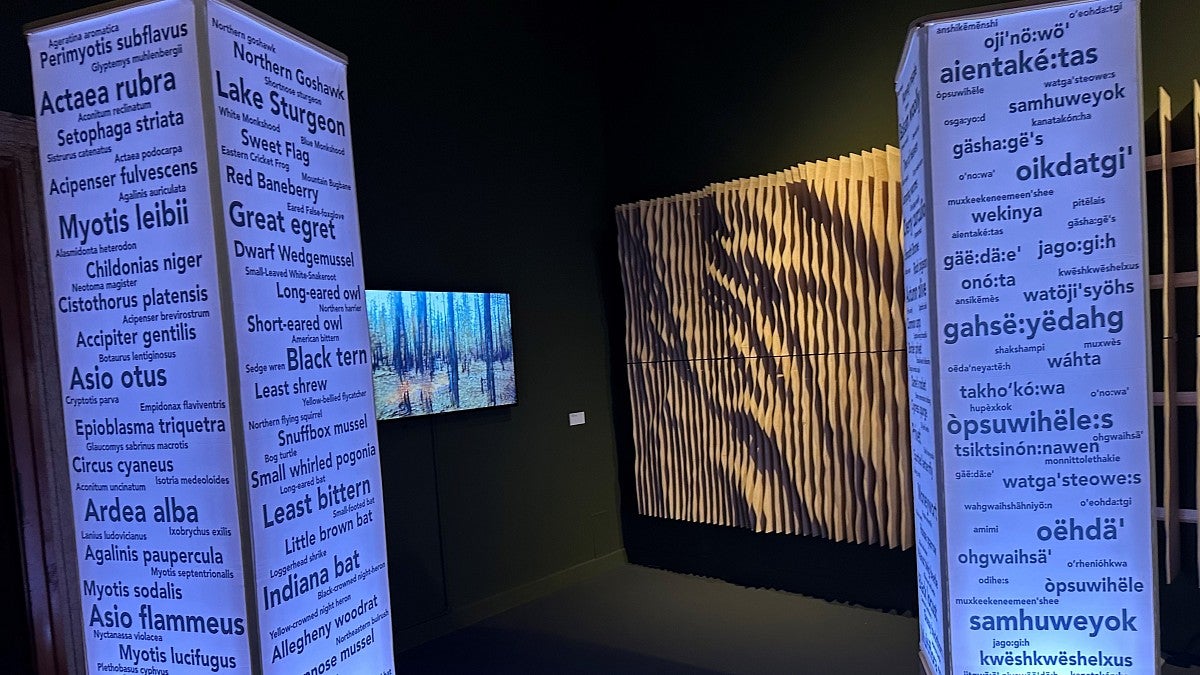Every two years, more than 600,000 visitors attend the Venice Biennale of Architecture, drawn by proposed solutions to the world’s most pressing issues, including climate change, environmental degradation, and the demise of biodiversity.
Students and faculty in the UO College of Design have been working on these issues for years, and at this year’s biennale, which opened in May and runs for six months, the UO played a prominent role.
Adrian Parr, dean of the College of Design, curated an exhibition on transpecies design, a concept that moves beyond the idea of design that functions solely as habitat for humans, instead creating art and architecture that encourages the flourishing of all species. The work of the college’s students, faculty and alumni is featured in the exhibition.
Transpecies design has been described as good design more holistically conceived, considering form, function and aesthetics, but also examining how it affects not only human life but all species.
It’s been a topic at the Overlook Field School, a program of the Department of Landscape Architecture that takes place each summer at a property in northeast Pennsylvania.
“The UO has been doing this kind of work before it was even fashionable,” Parr said. “It’s a place that lives and breathes its environmental legacy.”
The UO exhibition at the Biennale features work created by College of Design students, faculty members and alumni informed by research, field exercises and gatherings and classroom investigations, including:
- A building façade designed to provide habitat for Oregon’s endangered bumblebees.
- Research from faculty at the Institute for Health in the Built Environment showing how microbes proliferate and move through buildings.
- A study showing how mass timber construction provides a platform for sustainable forest management and reduces habitat loss from wildfires.
In addition to Parr, the UO was represented by students Trent Nesbitt, Madison Sanders, Yash Akhouri, and Kelly Kottlowski, and former students Morgen Olsen and Chloe Kov, whose work was included in in the UO exhibit.

Parr, along with Michael Zaretsky, interim director of the School of Art & Architecture, led a symposium to introduce the design community to the research and thought around the concept of transpecies design. Panelists included bioacoustics specialists, artists, and philosophers.
The practice of transpecies design has been around at least for a decade, Parr said.
“This is what we’ve been doing for years but never had a name for it,” she said. “It creates an identity and creates community where we can support one another to deepen the work and deepen the impact.”
Prominent examples of transpecies design include a building façade in New York City, designed by TerreForm ONE, which has monarch butterfly habitat incorporated into its design. The Bosco Verticale, or Vertical Forest, designed by Boeri Studio, are two apartment towers in Milan that feature exteriors planted with more than 900 trees, 1,500 perennial plants, and 5,000 shrubs.
Parr is a philosopher, and in her book “Earthlings” argued for a transenvironmental focus to design structured around three pillars of thinking and practice: transgenerational, transnational and transpecies.
“I took that third pillar out of the theoretical framework and asked, what if we test this? How would a transpecies design practice work? What would these practices look like and sound like?” she said.
The reason humankind finds itself confronting environmental cataclysm “is because of a human-centered approach to every aspect of our lives,” Parr said. “We have to decentralize the human and how we relate to other species.”
Financial support for the project came from three UO alumni: Sue Fuller, a board member of the University of Oregon Foundation; Larry Bruton, a retired Portland architect and member of the Dean’s Advisory Council; and architect and photographer Michael Wilkes.
States Industries, a Eugene plywood manufacturer, provided material used in the exhibition. Traci Sym and Daniel Meyers of the firm Plus And Greater Than, contributed their time and expertise.
“They were all excited for the UO to go to Venice,” Parr said.
—By Tim Christie, University Communications


